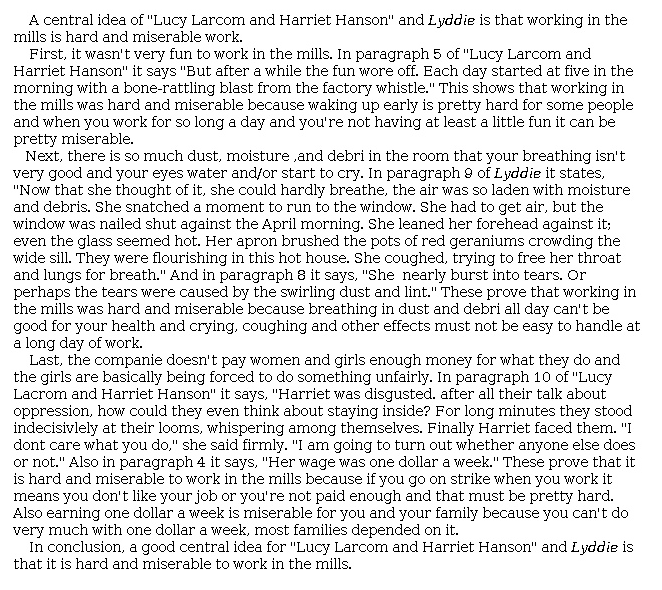2018 MCAS
Grade 7 English Language Arts
Question 15
Idea Development - Score Point 3
The essay presents the central idea of both passages in a general manner and with moderate organization. Details are well chosen to support the idea that "working in the mills is hard and miserable work," but they are paired with only some explanation: "These prove that working in the mills was hard and miserable because breathing in dust and debri[s] all day can't be good for your health." Overall, the central idea is adequately developed through a description of working conditions in the mill as "hard and miserable," the breathing conditions as challenging, and the pay as inadequate. The essay shows awareness of the task.
Standard English Conventions - Score Point 3
The essay shows consistent control of punctuation and sentence structure and contains only minor errors in grammar and spelling relative to the length.

[
5 Points |
5 Points |
4 Points | 3 Points |
2 Points |
1 Point |
0 Points]
